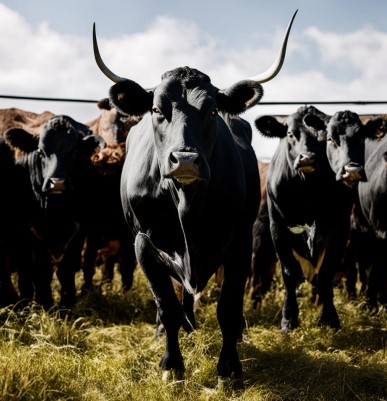It's all about DNA. Belarusian scientists turn the impossible into the possible thanks to genomic biotechnologies

Photo is illustrative in nature. From open sources.
How are the genes of long-lived people and Belarusian MILK connected, and when did athletes manage to acquire DNA passports?
“Today the world lives in an era of development and emergence of personalized medicine, and genomic biotechnologies are coming to the fore and becoming its core. Our institute conducts research aimed at studying the genetic mechanisms of the development of diseases to predict the risk of their occurrence or early DNA diagnosis. We are also researching genetic basis of individual sensitivity to drugs to increase the effectiveness of therapy and reduce negative consequences. We also study other genetically determined individual characteristics of a person,” explains the deputy director for scientific work.
Scientists at the Institute of Genetics and Cytology conduct research on a wide range of diseases: cardiovascular, endocrine, musculoskeletal, autoimmune, and oncological. There have already been some successes. By conducting genome-wide studies, scientists were able to model the gene networks of premature infants involved in the formation of complications and identify genes associated with a high risk of susceptibility to complications. In the field of pharmacogenetics, researchers have developed, tested and implemented molecular genetic techniques for assessing resistance or sensitivity to a wide range of drugs, which has significantly improved their effectiveness. Scientists have also been noted for their achievements in oncogenetics. They were able to identify the most significant mutations associated with the survival of patients with lung cancer.
“Our scientists have established a spectrum of mutations characteristic of Belarusian patients with a number of hereditary pathologies, including rare diseases. Often, the identified mutations have not been encountered before in other populations. Today, in complex clinical cases, doctors turn to scientists to carry out genotyping, which makes it possible to identify the cause of the disease , make a prognosis of its course and perform therapeutic correction,” added Pavel Morozik.
Having studied the genome of Belarusian centenarians, scientists have determined the range of gene variants characteristic of such people. In addition, when developing fermented milk products that help prevent a number of diseases, data on the qualitative composition of the intestinal microbiome of centenarians was used. Genetics did not stop there and developed technologies for DNA certification of athletes based on a set of genes that affect physical fitness, resistance to stress, eating behavior, the risk of occupational pathology, injury, and the ability to recover after physical activity. As has been proven more than once in practice, training athletes taking into account their individual characteristics allows them to achieve high athletic results while maintaining HEALTH .
Modifiedpotatoes and new old native animals - what do geneticists offer to agriculture today?
We cannot do without genomic biotechnologies in agriculture. Research is mainly aimed at obtaining results applicable in breeding practice for creating plant varieties and improving animal breeds. Experts study the genetics of agricultural plants and examine the genes responsible for the productivity and quality of the crop, affecting its resistance to stress factors. The developed sets of DNA markers are successfully used by breeders.
“Scientists pay great attention to the study of genes that determine the formation of plant resistance to stress, low and high temperatures, drought, and soil salinity. For example, the genetics of frost resistance of wheat, triticale, and rapeseed are being studied. It would be unnecessary to clarify how important these scientific studies are for our economy. The Institute of Genetics and Cytology has also built a full cycle of work on genetic engineering of plants. Our geneticists are conducting research to modify the potato genome, which will increase its resistance to diseases,” the Deputy Director for Scientific Work of the Institute of Genetics and Cytology introduced. .
Domestic geneticists are constantly paying attention to DNA diagnostics of hereditary diseases in cattle and pigs. Scientists are looking for the genetic causes of animal qualities that are valuable for agriculture, such as milk and MEAT productivity, fat and protein content in milk , and prolific pregnancy. Pavel Morozik clarified that research has also begun on the genetics of species native to Belarus - the honey bee and the Polesie horse.
“Thanks to the developed methods of DNA diagnostics of genetic defects associated with the development of hereditary diseases in cattle, since 2015 the number of carriers of dangerous mutations for a number of diseases has decreased by 1.8-6.5 times. Some mutations have disappeared completely,” the representative said Institute of Genetics and Cytology.
Eye and hair color, age and even psycho-emotional state can be determined by DNA.
Genomic biotechnologies are important in the field of biodiversity conservation and environmental protection. An example is the practice of geneticists removing DNA barcodes of rare protected and wild medicinal plants, which are then sent for storage to the Republican DNA Bank of humans, animals, plants and microorganisms.
Technologies for determining the most probable parameters of appearance, such as eye and hair color, age and psycho-emotional status of a person based on his DNA, have long been developed and tested in forensic laboratories. To diagnose artificially created biological threats, scientists continue to develop techniques for reading the genomes of viruses and bacteria.
“Today, the genomic biotechnology market is one of the fastest growing in the world, and the very fact of using the latest advances in genomics is a marker of the country’s technological development. Only a few countries can afford to effectively develop and implement their own genomic technologies, since the complexity and cost of research continue to grow, and their application increasingly requires an interdisciplinary approach,” summed up Pavel Morozik, deputy director for scientific work at the Institute of Genetics and Cytology of the National Academy of Sciences of Belarus.
Vera VASILEVSKAYA,
BELTA
Read together with it:
- Meat production has increased in the Angara region, but milk yields are declining.However, despite the increase in MEAT production, MILK yield declined by 1.6%, and egg production fell by 2.9%. Agricultural organizations accounted for the bulk of production, accounting for 99.4% of poultry, approximately 90% of pork and eggs, and approximately a quarter of all milk. At the same time, animal productivity increased: the average milk yield per cow was 5,68......
- Uruguay strengthens sanitary controls to protect meat export chain to ChinaUruguay has announced stricter controls and sampling at its MEAT processing plants after traces of tick-killing medication were found in a shipment of beef returning from CHINA . The measure aims to protect traceability, HEALTH reputation and logistical continuity of trade flows, which account for more than 6......
- Uruguay: Ministry of Livestock, Agriculture and Fisheries tightens controls after meat returns from ChinaTogether with the Directorate General of Animal Husbandry (DGSG), the MGAP issued Regulation No. 311/2025, which established that the presence of residues of ectoparasiticidal veterinary drugs in the body of cattle intended for slaughter, if the established limits of permissible levels are observed, will lead to more serious economic consequences and the suspension of activities. The measure was a...




























































